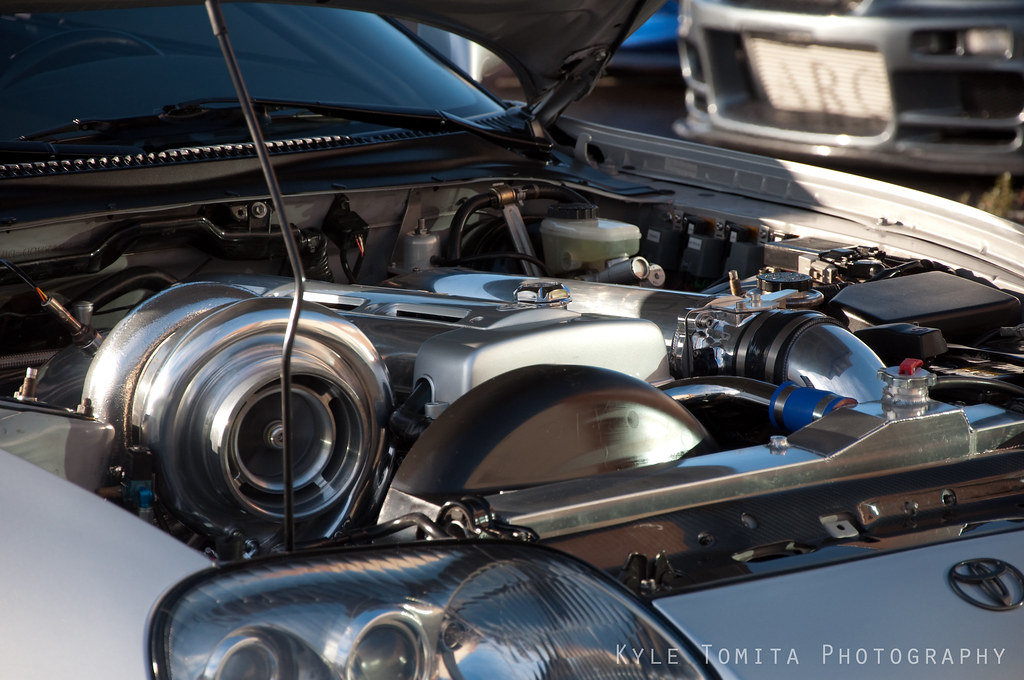10 Ways to Proactively Protect Your Engine
The majority of the time most of us don't spend a lot of time thinking about our engines. Engines need to be looked after. They need a check-up every now and then, and they also require some regular maintenance to keep them in good running condition. To help you take proper care of your engine and to keep it from creating serious problems, we've put together this list of 10 ways to proactively protect your engine.
10: Change the Oil Regularly
Changing the oil regularly is one of the most important things you can do for your engine. Oil keeps vital engine parts well lubricated so that they won't overheat. Your engine can't function without it and if you go too long between oil changes it can cause permanent damage to your engine over time. Suggestions for when you should change your oil will vary, but the most recent standard for modern cars is to change the oil every 5,000 miles (8,047 kilometers)
9: Keep the Cooling System Working
Keeping the engine cool that you can't overlook -- the cooling system itself. The cooling system includes the radiator, thermostat, water pump and coolant. The easiest way to protect your engine from overheating is by making sure you have the proper amount of coolant (radiator fluid) circulating throughout your engine. The coolant circulates through your engine when the thermostat determines that the engine is getting hot and needs to be cooled down. The water pump then pulls coolant from the radiator, sends it into the engine block and then back out to the radiator to be cooled back down. To check the coolant level, lift the hood and look at your coolant tank. It's a clear tank with a green or orange colored liquid in it. Make sure the coolant is above the minimum mark but below the maximum mark.
8: Keep the Engine Breathing
Air filters keep all the outside junk like bugs, leaves and dirt from getting inside of your engine. Over time, these filters can get clogged with dirt and need to be replaced. Depending on your driving habits and road conditions, an air filter can usually last a long time. But if the filter is allowed to get too dirty and not doing its job efficiently, it can either starve your engine for oxygen, let in too much junk -- or both.
7: Check for Leaks
You don't have to be a mechanic to spot a leak. In fact, sometimes you don't even need to see it -- you can just smell it. It's a good idea to check under your hood to see if you see or smell anything leaking from the engine. When you park your car, occasionally check under the car to see if anything is leaking onto the pavement below. If you can stay ahead of a minor leak and have it taken care of before it turns into a major problem you could save yourself a big headache later on.
6: Fill Up Your Gas Tank Before It Gets Too Low
Gasoline has a certain amount of sediment in it that settles to the bottom of your gas tank. After years of driving around and many fill-ups, there can actually be a fair amount of junk at the bottom of your fuel tank. Thus, if you consistently run your car all the way down to empty, you're pulling from the bottom-of-the-barrel and all the extra junk that's accumulated there. If the sediment gets through the fuel filter (some of it can) it can get into the engine and cause internal damage. It puts debris in areas where it shouldn't be and causes your fuel system and other parts of your engine to work harder. Some people recommend keeping a half-tank of fuel at all times. You may not want to fill-up that often, but make sure that you're not running the gas all the way down to empty. Your engine will thank you for it.
5: Keep Your Belts On
The function of a belt can vary from car to car, but some of their main responsibilities are running the fan, water pump, alternator and air conditioner. If your engine is on then your belts are running. In other words, they get a lot of use. They typically last a very long time, but eventually they will start to show signs of wear and begin to crack. If your belt breaks while you're driving it can cause major damage to the engine. Check your belts by turning them over slightly to see if they have any visible cracks in them.
4: Follow-Up When Automotive Warning Lights Come On
This may seem like an obvious one, but if you neglect to get your car checked when any of the automotive warning lights come on you could be neglecting a serious problem. The check engine light, and other warning lights, can come on for a number of reasons. The good news is that all of them aren't necessarily going to be a major issue. But you won't know until you get it checked out.
3: Replace the Fuel Filter
We mentioned earlier about how the fuel filter protects your engine from harmful sediment and particles in the gas. The fuel filter catches any particles or debris that would be harmful to the engine and keeps it trapped in a canister, much like your oil filter does. If the filter hasn't been replaced in a while, then it's a good idea to change it to keep the engine running smoothly. If your filter is easily accessible, this repair won't be too difficult, but some filters may be hard to reach. If you can't access your car's fuel filter, take it to a mechanic to be replaced.
2: Go Easy on the Start and Stop Driving
If it all possible, stick to the highway and keep your speed and RPMs at a consistent level. You'll notice better gas mileage and your engine will likely last longer if your driving habits allow it to run at a fairly consistent rate.
1: Change the Spark Plugs and Wires
One simple way to proactively protect your engine is by changing the spark plugs and wires. The wires running from your distributor send an electrical current to the spark plugs which then generate a spark to ignite the fuel and air mixture in your cylinders. Most manufacturers recommend changing them every 30,000 miles (48,280 kilometers), but some can go a little longer.




















This comment has been removed by the author.
ReplyDeleteThis comment has been removed by the author.
ReplyDeleteThis comment has been removed by the author.
ReplyDeleteThis comment has been removed by the author.
ReplyDeleteThis comment has been removed by the author.
ReplyDeleteThis comment has been removed by the author.
ReplyDeleteThis comment has been removed by the author.
ReplyDelete